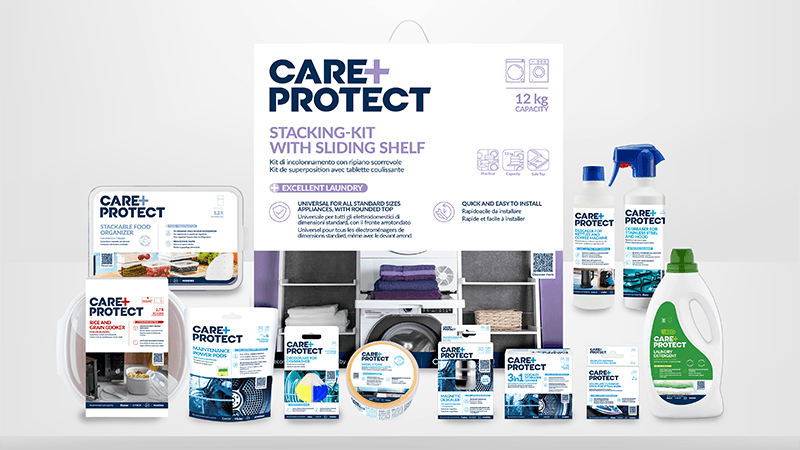
Microwave sizes: A complete measurement guide
Microwaves are a staple for convenient cooking but choosing the right size can be tricky—especially if you're fitting it between cabinets. Whether you’re considering a countertop, or a built-in model, this guide will take you through the different microwave sizes and help you find the perfect fit for your space.
What’s the best microwave for you?
There are many different types of microwaves with different features and settings. When choosing a microwave, it is important to consider a few different factors including the type of microwave as well as the dimensions.
Standard vs. combination microwaves
The standard microwave is something of the past. Modern microwaves aka combination microwaves are far more versatile and combine the standard function of microwave cooking with additional cooking techniques like baking and grilling.
While standard microwaves can be useful for defrosting frozen food or reheating leftovers, with the multiple functions of combination microwaves, you can bake, roast and cook foods like in a traditional oven. Combi microwaves are great for reduced spaces as they integrate many appliances into one. Moreover, cooking times with a combi microwave are much faster than a traditional oven, giving you the same results in less time, perfect for people on the go and when you need to cook quick weeknight meals.
Countertop vs. built-in microwaves
Another important consideration when choosing a microwave is where you plan on putting the appliance and whether a countertop or a built-in model is best for your space and routine.
Built-in microwaves are designed to fit seamlessly into a cabinet or wall space, helping you save valuable counter space in the kitchen. Many models like the built-in Haier microwaves include features like convection cooking, sensor technology, and programmable settings. With their ability to blend into surrounding cabinetry, they create a sleek and cohesive look in your kitchen.
Countertop microwaves sit on the counter and occupy valuable counter space, and thus don’t look as elegant as built-in models. With that being said, countertop microwaves can be moved and transported easily, making them a good choice for students, or people who are not ready to commit to a fixed built-in model.
What size microwave do you need?
Microwaves come in a large range of sizes from compact models to larger combination models. The most common microwaves have an interior capacity from 15 to 44 litres.
- Compact microwaves: are the smallest and are great for single people, students or people who have very limited space and cooking needs. The capacity of these microwaves ranges from 15-20 litres.
- Midsized microwaves: are a bit bigger and can prepare food for between 2-4 people and have an interior capacity of 21-25 litres.
- Full-sized microwaves: are usually over 26 litres and can cook for between 4 and 6 people.
Full-sized microwaves are generally the most common built-in models as they have similar dimensions to standard cabinets. In addition to being the most versatile and modern, they don’t occupy counter space, making them an excellent choice for any sized kitchen. Check out Haier full-sized built-in microwaves.
What are standard microwave measurements?
Now that we’ve seen the main types of microwaves, let’s take a look at the standard measurements for built-in microwaves. The standard measurements of built-in microwaves can vary slightly depending on the model and brand, but they are generally designed to fit standard cabinetry. Here are the typical dimensions:
Standard Built-In Microwave Dimensions
Width:
-
59–60 cm (most models are designed to fit a standard 60 cm wide cabinet opening).
Height:
-
38–45 cm (compact models)
-
45–50 cm (larger models, often combination microwaves).
Depth:
-
30–40 cm (compact models)
-
50–55 cm (larger models).
Tips to remember:
- Standard models are around 60cm wide. Measure your kitchen space to make sure it’ll fit.
- Check the depth of the space as built-in microwaves vary between 45 and 60cm.
- Ventilation Space: Ensure proper ventilation per manufacturer guidelines.
Pro Tip: Always measure your cabinet or wall opening carefully and check the manufacturer's specifications for compatibility.
How to care for your microwave
To make sure that your microwave lasts a lifetime, it’s important to keep it clean and in good working condition. Having a clean microwave is also essential for your health, safety and the quality of your food. Here are some tips on how to keep your microwave sparkling:
- Wipe down spills immediately: Clean up splatters as soon as possible to prevent stains and odours.
- Clean the inside regularly: Sanitise and deodorise the inside of your microwave with a specialised microwave cleaner like Care+Protect universal microwave cleaner and a soft cloth or sponge. Be sure to avoid abrasive products and tools that can damage the surfaces of your appliance. You can also use the this universal microwave cleaner to clean the turntable, the door seal and even the outside of the appliance. Its powerful formula cuts through grease and grime easily, leaving you with a sparkling-clean microwave.
- Avoid using metal: Never place metal objects, such as aluminium foil or metal containers, inside the microwave. These can cause sparks or fires. Instead, always use microwave-safe glass or plastic containers for cooking and reheating.
- Keep it dry: After cleaning, always dry the microwave thoroughly to prevent moisture build-up, which can cause internal components to malfunction.
By regularly cleaning and maintaining your microwave, you ensure its efficiency and extend its lifespan.
Finding the right microwave with Haier
Finding the right microwave involves understanding your cooking needs, space limitations, and desired features. Haier built-in combination microwaves offer sleek design, versatile functionality, and cutting-edge technology to elevate your kitchen experience. With precise dimensions, high-quality construction, and advanced capabilities, Haier ensures a perfect fit for any home.


